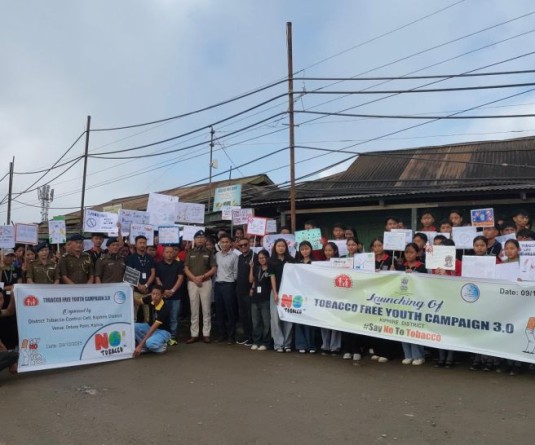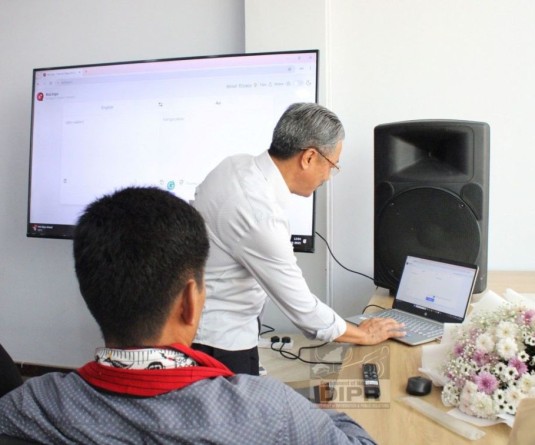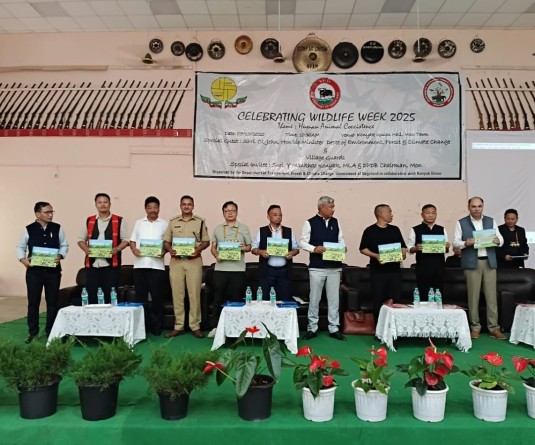.pdf-image-014.jpg)
Plastic waste emerge tops polluters during The Himalayan Cleanup 2025
DIMAPUR, JUNE 4 (MExN): An alarming amount of plastic waste, particularly single-use plastics and multi-layered packaging (MLP), emerged as the top pollutants during the Himalayan Cleanup (THC) 2025 held in Dimapur on May 29, organised to coincide with World Environment Day.
The cleanup was held on May 29 at the Dimapur Railway Station and State Stadium, jointly organised by five organisations—Living For Environment (LiFE), YouthNet, E-Circle, Green Guard, and Kuda Waste Solutions. The initiative was part of the annual pan-Himalayan campaign timed with World Environment Day.
.pdf-image-005.webp)
While volunteers collected large volumes of waste from both sites, only a portion could be audited due to financial constraints, inclement weather, and the sheer quantity of waste. The audit was led by LiFE, which also serves as the State Coordinator for THC Nagaland 2025.
According to LiFE, most of the collected waste was soiled, which impacted the final weight calculations. However, the findings clearly showed that plastic waste continues to dominate the pollution landscape in Dimapur. Distinct consumption patterns also emerged- tobacco and gutka waste was more prominent at the Railway Station, while alcohol-related waste dominated at the State Stadium.
.pdf-image-002.webp)
Two Sites, One Story: Plastic Dominates
A total of 145 different brands or waste items were identified at the Dimapur Railway Station, including e-waste, alcohol packaging, food waste, and various plastics.
The Top 6 polluters at the Railway Station were Plastic Bag (Black), Plastic Bag (Clear/Transparent), Disposable Paper Cup, Shikhar (gutka), Signature (alcohol), Phone Tempered Glass. Plastic waste was confirmed as the major waste category in the area.
.pdf-image-006.webp)
The State Stadium was divided into nine zones to facilitate collection and sorting. As with the Railway Station, plastic waste was the predominant category. Despite Nagaland being a Dry State, the site yielded a significant amount of alcohol-related waste, raising questions about enforcement and public compliance.
During the cleanup, one volunteer sustained an injury due to broken alcohol bottles scattered at the site, underscoring the safety risks posed by improper disposal.
Among the most collected items were 4,151 black plastic bags, 2,847 clear/transparent plastic bags, 2,415 disposable plastic cups.
A total of 363 alcohol bottles and cans were recovered, weighing 101.80 kilograms, with Budweiser identified as the most commonly consumed brand among the 29 identified alcohol brands.
.pdf-image-010.webp)
The audit also revealed the presence of eight soiled diapers, weighing 4.71 kg, from an area within the stadium that appears to be turning into an informal dumpsite for local residents.
Unexpected Discovery
One of the more surprising findings was the presence of used condoms among the waste from the stadium, hinting at misuse of public spaces and which was not anticipated by the audit team.
Call for Action
In its summary, LiFE stated that the THC 2025 findings reaffirm a persistent crisis: plastic pollution remains the biggest environmental challenge in Dimapur. Without urgent behavioural change and the adoption of sustainable waste management practices, the city risks entering what the organisers described as a "waste pandemic"—a long-term crisis with potentially irreparable impacts on public health and the environment.






